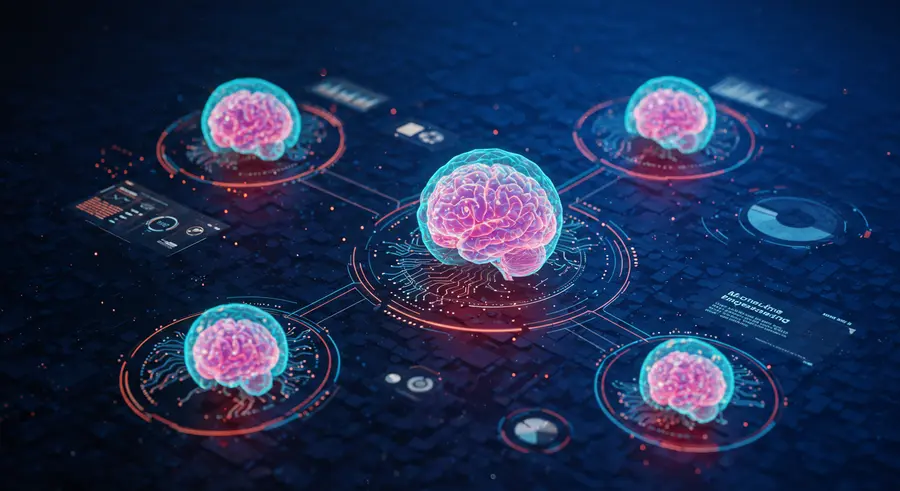
The Next Frontier: AI in Chaos Engineering
As systems grow exponentially in complexity, scale, and interconnectedness, traditional methods of ensuring resilience often fall short. The sheer volume of data, the dynamic nature of cloud-native environments, and the subtle interdependencies within microservices architectures demand a more sophisticated approach. Enter AI-driven resilience – the symbiosis of Artificial Intelligence and Chaos Engineering. This advanced paradigm moves beyond manual fault injection to leverage machine learning for predictive analysis, intelligent experiment design, and automated anomaly detection, paving the way for truly self-healing systems.
Automated Experiment Design and Optimization
One of the most significant contributions of AI to Chaos Engineering is its ability to automate and optimize the design of experiments. Manually identifying potential weak points in a sprawling distributed system can be an exhaustive and error-prone task. AI algorithms, trained on historical incident data, system telemetry (logs, metrics, traces), and topology maps, can:
- Suggest Critical Paths: Identify the most vulnerable service dependencies or critical user journeys to target.
- Predict Failure Modes: Based on past behavior, predict which types of failures are most likely to occur and where.
- Optimize Blast Radius: Recommend the optimal scope for experiments to achieve meaningful results without undue risk to production.
This transforms experiment design from an art into a data-driven science, ensuring that chaos tests are always relevant and impactful. Just as an AI-powered financial companion provides `market insights` for `investment decisions`, AI in Chaos Engineering provides insights for strategic system hardening.
Intelligent Fault Injection
Beyond simply injecting random failures, AI enables intelligent, context-aware fault injection. Machine learning models can analyze real-time system state and performance metrics to determine the most opportune time and method for introducing disruptions. This includes:
- Adaptive Injection: Adjusting the intensity or duration of an attack based on real-time system response.
- Mimicking Realistic Scenarios: Replicating nuanced failure patterns observed in actual incidents (e.g., partial service degradation, transient network issues, specific resource contention).
- Dependency-Aware Injection: Understanding how failures propagate through a system and targeting upstream or downstream services effectively.
This level of precision in fault injection leads to more insightful experiments and helps uncover complex, hidden vulnerabilities that simpler, brute-force methods might miss.
Predictive Anomaly Detection and Response
During a chaos experiment, quickly identifying and understanding the impact of an injected fault is paramount. AI-powered anomaly detection systems excel here. By establishing baselines of normal system behavior, machine learning models can swiftly identify deviations that signify a system struggling under chaos conditions. This includes:
- Early Warning Systems: Detecting subtle anomalies before they escalate into widespread outages.
- Root Cause Analysis Assistance: Correlating anomalies across different system components to pinpoint the origin of a problem more quickly.
- Automated Remediation Triggers: In advanced scenarios, AI can even trigger automated rollback or healing actions if an experiment goes awry or critical thresholds are breached.
This proactive monitoring and response capability significantly reduces the risk associated with running chaos experiments in production and enhances the learning process. For further reading on advanced anomaly detection, you might find resources from the AWS Machine Learning Blog insightful, or explore academic papers on AI for System Resilience on Google Scholar.
Challenges and Best Practices for AI-Driven Resilience
While promising, implementing AI-driven resilience comes with its own set of challenges:
- Data Quality and Volume: AI models are only as good as the data they're trained on. Comprehensive, clean, and relevant telemetry is crucial.
- Model Interpretability: Understanding why an AI model made a particular recommendation or detected an anomaly can be complex, but is essential for trust and debugging.
- Continuous Learning and Adaptation: Systems evolve, and so must the AI models. Continuous retraining and adaptation are necessary.
- Ethical Considerations: Ensuring AI-driven systems do not introduce new biases or exacerbate existing vulnerabilities.
Best practices include starting small, validating AI recommendations with human oversight, maintaining robust observability, and fostering a culture of continuous learning and experimentation. This mirrors the iterative process seen in areas like cybersecurity, where staying updated is key, as discussed on sites like Dark Reading.
The Future Landscape
The integration of AI into Chaos Engineering is still in its nascent stages but holds immense potential. We are moving towards a future where systems are not only resilient but also intelligently adaptable, capable of learning from their own failures and proactively reconfiguring themselves to withstand future disruptions. This convergence with AIOps will create a new generation of self-optimizing, self-healing, and inherently robust digital infrastructures.
Embracing AI-driven resilience is not just about adopting new tools; it's about fundamentally rethinking how we approach system reliability and proactively build for an unpredictable future. It's about building confidence, not just in our systems, but in our ability to manage the chaos.